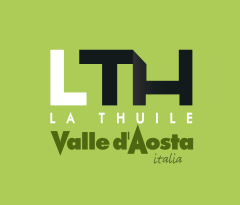SkiAlp from La Rosière
SkiAlp from La Rosière
11,7km
Distance+940m
Positive Elevation-622m
Negative ElevationUphill distance: 4 km; elevation gain with sealskins: +540 m; total elevation difference 955m.
The SkiAlp trail includes the use of ski lifts on some portions of the trail.
The SkiAlp trail includes the use of ski lifts on some portions of the trail.
Embed this item to access it offline
A beautiful international track dedicated to ski mountaineering that combines sporting activity with the discovery of places rich in natural values, landscapes, panoramic viewpoints and points of interest linked to history and tradition.
Skis and skins then become an incredible way to explore this area straddling Italy and France, in a succession of ascents and descents in fresh snow, enveloped in the perfection of nature and filled with beauty.
Skis and skins then become an incredible way to explore this area straddling Italy and France, in a succession of ascents and descents in fresh snow, enveloped in the perfection of nature and filled with beauty.
Description
Starting from La Rosière, climb up to Col de la Traversette at an altitude of 2383m. From here, it is possible to descend to the start of the Bellecombe 1 ski lift. Using the Bellecombe 1 and Bellecombe 2 lifts, it is possible to reach the 2558 m of the Belvedere Pass, from where it is possible to descend to La Thuile.
Departure : La Rosière
Arrival : La Thuile
2 points of interest

Small patrimony
The Traversette redoubt
The Fort Traversette redoubt is located at 2400 m in a dominant position on the French side of the Petit St Bernard Pass. A fort already existed in the 17th century when Savoy and Valle d'Aosta were united in the possessions of the House of Savoy. The transfer of the royal seat from Chambéry to Turin turned what is now Haute Savoie into a province of secondary importance, and at the end of the century fortifications began to be built on the border of the Savoy territories, separating regions hitherto united by equal traditions, culture, religion and language.
On the ruins of the old fort destroyed during the French Revolution, the present fort was built in 1891, taking advantage of its strategic location for the military surveillance of the national borders. Initially, it was only occupied in the summer and later throughout the year to train the troops in the difficult mountain conditions.
In the 1930s, the fort was equipped with gun emplacements, radio equipment, fittings for the troops and their supply in response to the great defence project, the Vallo Alpino, desired by Mussolini.
On 10 June 1940, Italy declared war on France and began a massive mobilisation on the borders. On 21 June, an air and ground attack kept the brave soldiers stationed at the fort led by Lieutenant Desserteaux busy for four days. The fort was occupied by Italian, then German troops and liberated after bitter fighting in April 1945.
Today in ruins, it is located directly on the slopes of the Piccolo San Bernardo international ski area, which unites the resorts of La Thuile in Valle d'Aosta and La Rosière in Haute Savoie.
On the ruins of the old fort destroyed during the French Revolution, the present fort was built in 1891, taking advantage of its strategic location for the military surveillance of the national borders. Initially, it was only occupied in the summer and later throughout the year to train the troops in the difficult mountain conditions.
In the 1930s, the fort was equipped with gun emplacements, radio equipment, fittings for the troops and their supply in response to the great defence project, the Vallo Alpino, desired by Mussolini.
On 10 June 1940, Italy declared war on France and began a massive mobilisation on the borders. On 21 June, an air and ground attack kept the brave soldiers stationed at the fort led by Lieutenant Desserteaux busy for four days. The fort was occupied by Italian, then German troops and liberated after bitter fighting in April 1945.
Today in ruins, it is located directly on the slopes of the Piccolo San Bernardo international ski area, which unites the resorts of La Thuile in Valle d'Aosta and La Rosière in Haute Savoie.

Panorama
The Petit St Bernard Pass
At the Petit St Bernard Pass (2188 m), today an Alpine pass linking France and Italy, there are many testimonies of past eras. More than 2000 years ago, it was a place of great passage along the Via delle Gallie. The great traffic of merchants, soldiers, wayfarers required the construction of a manse as a stopping point to assist travellers. Today only the foundation perimeter remains, but from the size one can understand its importance.
Just beyond is the Cromlech, a circle of 46 stones precisely aligned by the Celts who studied celestial phenomena and practised rituals here. At the summer solstice there is a unique phenomenon: at sunset the shadows of the two peaks behind the Sacred Circle are reflected on the ground and embrace the perimeter, leaving only the centre of the circle to the sun.
To more recent times dates the La Chanousia Alpine Botanical Garden, founded in 1897 by Abbot Chanoux, rector of the Petit St Bernard Hospice for almost half a century. A lover of mountains and science, he wanted to cultivate specimens of Alpine flora here to make them known and protect them. The garden covers 10,000 square metres and is now home to around 1,200 species.
From up here, it is impossible not to notice the massive, slender silhouette of the hospice, a home for travellers, linked to the figure of Saint Bernard archdeacon of Aosta. The first hospice dates back to the year 1050, since 1752 the crusader emblem of the Mauritian Order has appeared and still represents the soul of the Colle that welcomes and unites.
The most recent evidence dates back to the Second World War: bunkers, bivouacs, artillery observation posts and anti-tank barriers were part of the Western Alpine Wall defending the Italian borders in the great defence project that spanned the entire Alpine arc. In mid-August 1939, a contingent of soldiers was sent to guard the borders and the declaration of war was not long in coming...
Just beyond is the Cromlech, a circle of 46 stones precisely aligned by the Celts who studied celestial phenomena and practised rituals here. At the summer solstice there is a unique phenomenon: at sunset the shadows of the two peaks behind the Sacred Circle are reflected on the ground and embrace the perimeter, leaving only the centre of the circle to the sun.
To more recent times dates the La Chanousia Alpine Botanical Garden, founded in 1897 by Abbot Chanoux, rector of the Petit St Bernard Hospice for almost half a century. A lover of mountains and science, he wanted to cultivate specimens of Alpine flora here to make them known and protect them. The garden covers 10,000 square metres and is now home to around 1,200 species.
From up here, it is impossible not to notice the massive, slender silhouette of the hospice, a home for travellers, linked to the figure of Saint Bernard archdeacon of Aosta. The first hospice dates back to the year 1050, since 1752 the crusader emblem of the Mauritian Order has appeared and still represents the soul of the Colle that welcomes and unites.
The most recent evidence dates back to the Second World War: bunkers, bivouacs, artillery observation posts and anti-tank barriers were part of the Western Alpine Wall defending the Italian borders in the great defence project that spanned the entire Alpine arc. In mid-August 1939, a contingent of soldiers was sent to guard the borders and the declaration of war was not long in coming...
Altimetric profile
Access and parking
The route runs between La Thuile in Italy and La Rosière in France.
Arriving from Italy: SS 26 of Valle d'Aosta as far as La Thuile.
Arriving from France: D1090 as far as La Rosière.
Arriving from Italy: SS 26 of Valle d'Aosta as far as La Thuile.
Arriving from France: D1090 as far as La Rosière.
Report a problem or an error
If you have found an error on this page or if you have noticed any problems during your hike, please report them to us here:
 Ufficio del Turismo / Office du Tourisme La Thuile
Ufficio del Turismo / Office du Tourisme La Thuile  Office de Tourisme Séez
Office de Tourisme Séez  Office du Tourisme de la Rosière Montvalezan
Office du Tourisme de la Rosière Montvalezan Espace San Bernardo ski
Espace San Bernardo ski